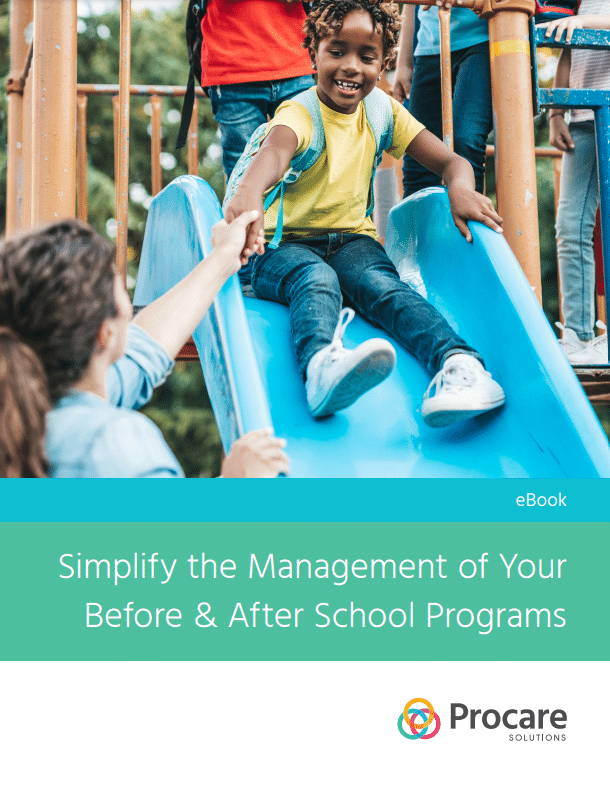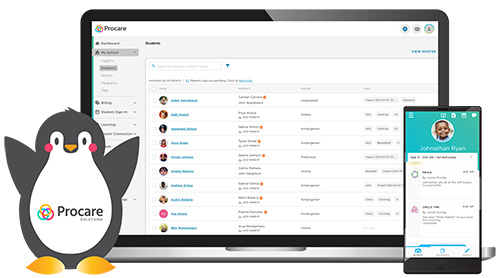This post was originally published on March 3, 2021. It was updated with new content on 3/28/2024.
As you think how to start an afterschool program, you must make sure you’re covering all the bases to fill a growing need. The demand for afterschool programs is high. For every student in afterschool, two more would participate if a program were available, according to the Afterschool Alliance.
“Decades of research prove afterschool helps kids attend school more often, get better grades, and build foundational skills, like communication, teamwork, and problem solving,” the alliance says, adding that afterschool programs give parents peace of mind because they know their kids are safe — online and offline — and engaged in fun learning opportunities.
Let’s get an overview of what you must do to start an afterschool program and look at six steps to make it happen.

What Is an Afterschool Program?
Afterschool programs, which sometimes are called OST or out-of-school-time programs, serve children and youth of all ages, according to youth.gov. These programs include academic support, mentoring, positive youth development, arts, sports and recreation, apprenticeships, workforce development programs and programs for opportunity youth, who are youth not in schools or the workforce as well as youth experiencing homelessness.
A high-quality afterschool program provides a safe, nurturing environment for school age children by offering activities and homework help while fostering safe social interactions.
What Is the Difference Between Afterschool Daycare and Afterschool Programs?
Afterschool daycare and afterschool programs are both child care. But there are a few key differences.
The main difference between daycares and afterschool programs is the focus and hours of operation, according to Ivy League Kids.
Daycares typically care for children as young as infants while afterschool programs are generally for school-aged children. Afterschool programs often have a more educational or recreational focus, with activities designed to enrich children’s learning and development.
Do You Need a License for an Afterschool Program?
States have minimum licensing requirements that apply to afterschool programs, according to youth.gov. If you want to start a program, contact your state’s licensing agency to find out about the requirements. Private and public funding may also have separate requirements.
Some state requirements for school-age care include maintaining staff information, attendance records, staff to child ratios, immunizations and more! With Procare, all this information is at your fingertips!
Six Steps to Start an Afterschool Program
1. Secure a Designated Space
When choosing the location for your afterschool program, keep travel and convenience in mind. Consider securing a location that’s close to the school where prospective students are enrolled and conveniently accessible to parents.
Affordable options include schools, local libraries, churches or recreation centers.
2. Create a Business Plan
Do your homework. Research the market you’re entering, including competing afterschool programs and their curriculum. This will give you a foundation to build a business plan based on the community’s needs.
Local parents can be a great resource for ideas and information about what they value in an after-school program.
So how much does it cost to open an afterschool program? It depends on the size, location and scope of your program. You’ll need to factor in rent, purchasing furniture, insurance, marketing and vehicles to transport children from school to your program.
3. Build Curriculum
You’ll need to create a diverse set of curriculum options to appeal to different age groups, including academic and recreational enrichment activities. Start with the basics like art, music, math and science. You can then supplement with homework help, recreational activities and plenty of free time to let the kids in your care burn off steam as needed. Parents also value enhanced and differentiated programs such as martial arts, foreign languages, cooking classes and STEM activities. Unique class offerings can differentiate your after-school program from competitors.

Let’s take a look at some afterschool program activities:
1. STEM Explorers Club
Objective: Cultivate a passion for STEM through hands-on projects and experiments.
- Activities: Building simple machines, coding rudimentary programs, engaging in basic chemistry experiments and participating in math challenges
- Learning Outcomes: Develops problem-solving skills and fosters an understanding of scientific principles and technology
2. Literacy Enrichment Program
Objective: Enhance reading, writing and comprehension skills while instilling a lifelong love of literature.
- Activities: Book club discussions, creative-writing workshops, poetry readings, interactive storytime sessions and vocabulary games
- Learning Outcomes: Increases literacy proficiency, expands vocabulary and encourages imaginative thinking
3. Young Artists Studio
Objective: Provide a creative outlet for self-expression through various art mediums.
- Activities: Painting, sculpting, drawing, mixed media crafts, art history lessons and artist showcases
- Learning Outcomes: Stimulates creativity, develops fine motor skills and promotes an appreciation for the arts.
4. Global Cultures and Languages
Objective: Expose students to diverse cultures and languages to foster global awareness and empathy.
- Activities: Basic language lessons, cultural crafts, international cuisine cooking sessions, traditional dance and music exploration as well as world geography
- Learning Outcomes: Builds cultural competency, encourages linguistic interest and nurtures an inclusive mindset
5. Eco-Warriors Environmental Club
Objective: Educate students on environmental conservation and sustainability practices through interactive experiences.
- Activities: Gardening and composting projects, nature hikes and wildlife observation, recycling and upcycling crafts and energy conservation workshops.
- Learning Outcomes: Imparts environmental stewardship, teaches sustainable living and inspires actions that benefit the planet
4. Hire Qualified Staff

Hiring qualified and passionate staff is critical to help parents feel confident that their child is receiving outstanding care as well as help you build and maintain enrollment. As you search for educators for your program, consider reaching out to teachers and other staff at elementary schools who may be seeking additional after-hours work. Since many of these individuals already have relationships with local families and they are already employed in schools, you can be confident they’ll greatly enhance your enrichment program.
5. Use Technology to Simplify Processes

Operating a successful after-school program requires juggling many responsibilities that often compromise your primary focus of caring for students. Using child care management software simplifies time-consuming tasks such as collecting tuition, registering children, managing wait lists, processing employee time cards and tracking attendance. By simplifying operations with software designed for afterschool programs, your staff can focus on fostering a caring environment that promotes students’ growth rather than worrying about paperwork and administrative tasks.
6. Maintain a Safe and Secure Environment
Afterschool programs are meant to provide a secure place for children when school is not in session so ensuring your students’ safety is priority number one. Security solutions such as keyless entry, secure door controllers and fingerprint pads for electronic check-in help prevent unauthorized entry. They also help you monitor who has entered secure areas so you can take appropriate measures to tighten security controls if necessary.
How Procare Can Help!
Procare gives you the power to manage every aspect of your afterschool program, regardless of its size and structure. From invoicing, billing and payments, to keeping track of children and family information, everything you need is in one place.
Procare saves you time and money by streamlining administrative tasks so you can focus more on the growth and development of the children in your care.
Download the “Simplify the Management of Your Before & After School Programs” eBook here to learn how Procare can:
- Manage child and family data with an online family portal
- Offer secure online payments by credit or debit card
- Manage enrollment level, staffing and scheduling across multiple program sites
- Keep parents informed with updates using email, text and push notifications
- Share monthly calendars so parents can plan to attend events or activities
Get started today!





